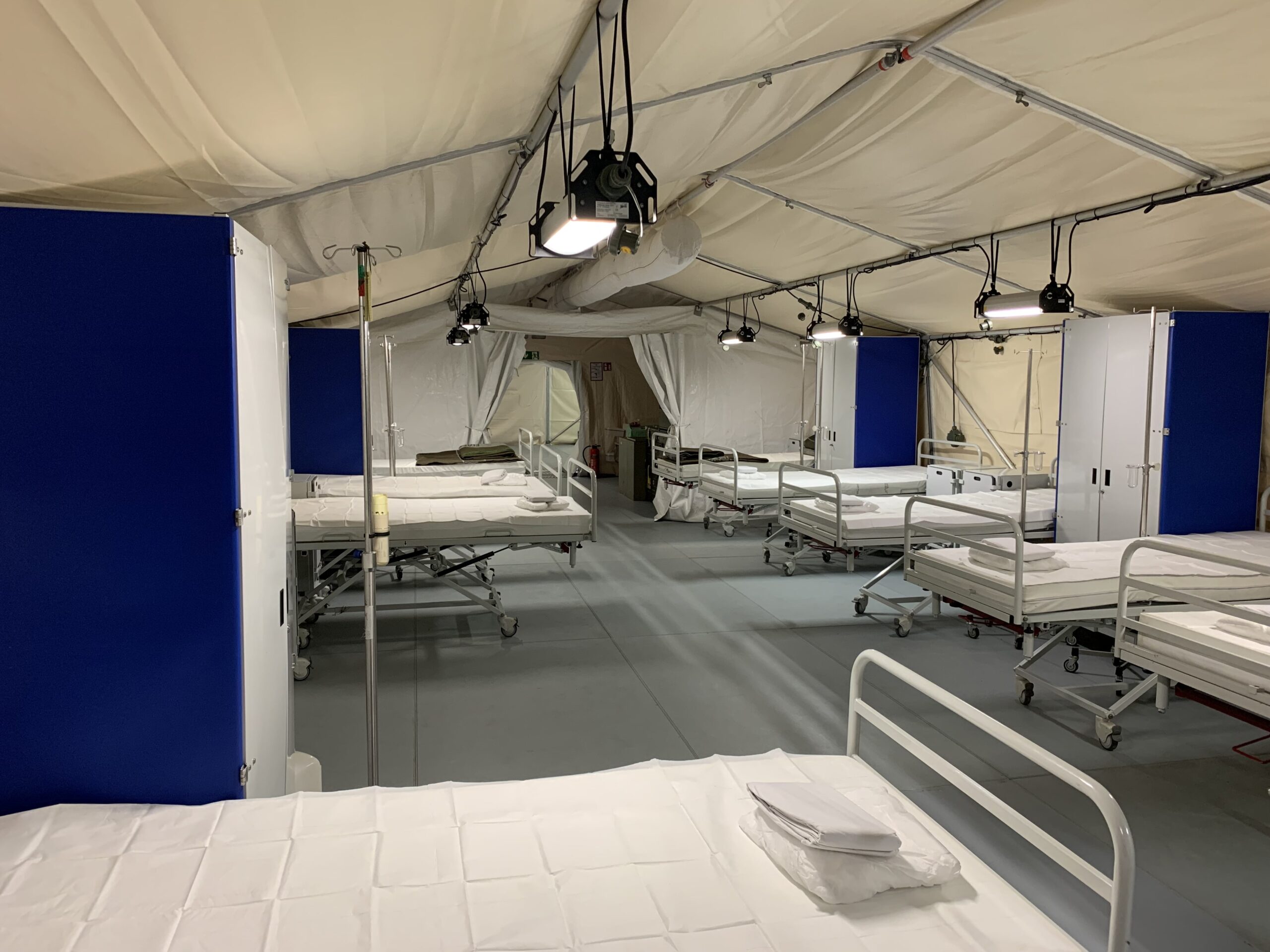Infrastructure in a Kit: Demountable Hospitals Funded by Socially Responsible Companies
This option provides communities with a way to access health services.

Behind the operation of this innovative infrastructure lies a new type of actor: private companies that, under corporate social responsibility (CSR) schemes and public-private partnerships, finance or co-finance these hospitals. Far from being one-off donations, many companies create long-term social investment programs that include maintenance, the provision of medical supplies, and the training of local personnel.
Companies in the pharmaceutical, construction, renewable energy, and medical technology sectors have joined these initiatives. Some do so through corporate foundations, while others channel their contributions through specialized NGOs or agreements with provincial governments.
A notable example is the “Salud Modular” program, launched by an alliance between a multinational solar energy company and a Latin American biotechnology firm. Since 2022, they have installed seven units in rural communities in Bolivia, Guatemala, and Colombia, benefiting more than 150,000 people.
Health Emergencies and Rapid Responses
The COVID-19 pandemic was a turning point for this technology. Amid hospital collapses in various parts of the world, demountable hospitals proved to be highly effective as a rapid solution to expand care capacity.
Organizations such as Doctors Without Borders, the Red Cross, and UN agencies began using these structures to set up intensive care units in record time. In Latin America, they were deployed in low-income neighborhoods in Lima, the favelas of Rio de Janeiro, and indigenous communities in southern Mexico.
Building on that experience, these facilities are now being used to implement long-term territorial health strategies. In areas with high rates of respiratory illnesses, endemic infections, or chronic malnutrition, kit hospitals are becoming permanent or semi-permanent resources.
But despite their major benefits, the demountable hospital model also presents challenges—the most significant being the difficulty of ensuring sustainability over time. Once the infrastructure is installed, it is crucial to have trained staff, a steady supply of medical materials, and efficient management systems.
Another key aspect is integration with public health systems. To avoid duplication of efforts or fragmentation, kit hospitals must be incorporated into local health networks, adhering to protocols, medical records, and national policies.
For the companies funding these projects, the return is not financial but tangible in reputation, social commitment, and stronger relationships with communities. In many cases, companies build lasting ties with the regions where they operate, reducing tensions, improving their social license, and reinforcing their identity as agents of positive change.
Looking ahead, the evolution of these hospitals points toward technological innovation, with the development of smart modules equipped with remote monitoring sensors, satellite connectivity, and AI-assisted diagnostics.
Collaborations with universities are also being explored to transform some units into on-site medical training centers. At the same time, networks of cooperation among governments, civil society, and companies are expanding to scale up this model and replicate it in other vulnerable regions around the world.
Community Involvement and Economic Impact
Community involvement is another fundamental pillar of the success of these demountable hospitals. In many cases, residents participate in the assembly, adaptation, and basic operation of the units, strengthening their sense of ownership and fostering a culture of collective care.
The training of community health promoters, selected from local leaders, is key to ensuring continuity of care and effectively channeling health needs into the formal system.
The growth of this model will depend both on technological innovation and on multisectoral commitment. Strengthening private investment with social impact, designing public policies that incorporate modular infrastructure into territorial health plans, and consolidating regional cooperation networks are necessary steps to scale this approach.
From an economic standpoint, these hospitals represent a cost-effective alternative to traditional infrastructure. By reducing construction times and avoiding the high costs of civil works, they allow resources to be redirected toward other critical areas such as medicines, professional training, or medical transport.
It is also important to highlight the model’s potential for generating local employment. From hiring labor for assembly to integrating health professionals trained in the regions where the units are installed, kit hospitals promote circular economies in communities that often depend on subsidies or external assistance.
For these reasons, demountable hospitals funded by socially responsible companies are much more than an emergency solution. They represent a new way of thinking about health infrastructure—as a collective, flexible, decentralized, and accessible good.


